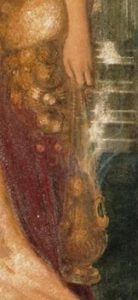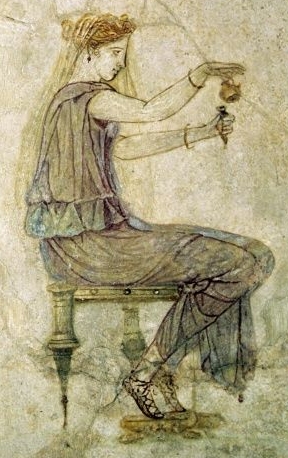Le miasme et l’oliban. L’odeur et les sens dans la réception de l’Antiquité
Colloque international IMAGINES/ International Conference IMAGINES
18-20 Octobre 2018, Toulouse
L’Antiquité classique a longtemps été considérée comme étant « aseptisée », d’une blancheur immaculée : l’idéalisation dont elle a fait l’objet l’a dépouillée de sa dimension sensorielle, au profit du seul paradigme visuel. Le domaine olfactif, en particulier, a peu retenu l’intérêt des études sur la réception de l’Antiquité, en raison de son caractère évanescent et difficile à saisir. Pourtant, les odeurs que l’on prête à tel personnage ou à tel groupe social véhiculent tout un imaginaire riche et porteur de valeurs spécifiques : parfums et pestilences contribuent à façonner les façons de penser et d’agir d’une société. L’objectif du colloque sera d’explorer le rôle de l’olfaction, en relation avec les autres registres sensoriels, dans les processus de réception de l’Antiquité à l’époque moderne – que ces derniers se manifestent sous la forme d’un rejet, d’une réappropriation ou d’une idéalisation. Nous nous intéresserons de manière plus spécifique aux arts visuels et performatifs, lorsqu’ils cherchent à engager l’expérience sensorielle du lecteur ou du spectateur. Seront ainsi concernés non seulement peinture, littérature, théâtre, cinéma, mais également la publicité, les jeux vidéos, les séries, les comics et romans graphiques ainsi que les reconstitutions historiques à grande échelle qui ont renouvelé l’imaginaire lié à l’Antiquité en
touchant un plus large public.
Les communications (en français ou en anglais) seront d’une durée de 20 min et pourront porter sur l’une des quatre thématiques suivantes :
– La matérialité de l’odeur: quels sont les objets, végétaux et substances odorant(e)s qui caractérisent les sociétés antiques dans l’imaginaire qui s’est développé autour de l’Antiquité? Peut-on confronter les résultats des analyses archéométriques actuelles, qui nous renseignent sur la nature des produits odorants manipulés par les Anciens, aux
representations que l’on trouve dans les oeuvres modernes? Quels efforts aujourd’hui pour donner à “sentir” l’Antiquité et quels moyens techniques mobilise-t-on (en particulier dans les musées, les productions multimedias…)? On pourra accorder une attention particulière aux fleurs, qui contribuaient à la mise en place de cet imaginaire odorant, permettant également de faire le lien avec les autres registres sensoriels.
– La sensorialité des rituels: dans quelle mesure la mise en scène d’effluves odorantes (encens, fumée du sacrifice, huiles parfumées, …) sert-elle à suggérer les pratiques rituelles – ou magiques – des Anciens? Quels types de dispositifs imagine-t-on? La mise en scène, à travers les gestes, les produits manipulés et les effets recherchés, participe-t-elle à créer un sentiment d’altérité chez les Modernes et à creuser une distance entre religions
polythéistes et monothéismes?
– La puissance érotique des senteurs et parfums: par quels moyens olfactifs (parfums, produits cosmétiques) les corps masculins et féminins étaient-ils rendus désirables et attractifs? Comment cet imaginaire fut-il exploité en peinture, au théâtre, dans les films, dans les publicités, etc. – notamment en rapport avec la vogue de l’orientalisme? Il s’agira aussi, à travers cette thématique, d’interroger le processus de construction du genre et la relation entre odeurs, sexualité et (homo)érotisme. On inclura également les réflexions autour de l’imaginaire lié aux bains, aux thermes et à la propreté des corps sains (sans perdre de vue l’angle olfactif).
– Les mauvaises odeurs et les corps malades: dans quelle mesure le tournant hygiéniste qui a affecté les sociétés occidentales au cours de l’époque moderne (cf. A. Corbin) a-t-il influencé la vision du paysage olfactif antique ? A partir de quand la conception goethéenne du classique comme ‘sain’ a-t-elle cessé de prévaloir? Et plus généralement, comment les Modernes se sont-ils représentés la maladie et les mauvaises odeurs des Anciens? Comment ce désir de traduire l’expérience sensorielle antique de manière plus ‘authentique’ s’exprime-t-il par exemple dans le cadre de performances théâtrales ou de reconstitutions historiques (‘re-enacment’) de batailles célèbres de l’Antiquité? Les communications pourront aussi envisager la dimension identitaire de l’olfaction: à quels
corps associe-t-on, depuis l’Antiquité, les pestilences? Ceux des ennemis, des étrangers, voire ceux des classes sociales les plus basses – artisans, paysans, manoeuvres, esclaves…?
Les propositions de communication (300 mots) accompagnées d’une courtebiographie sont à envoyer à Adeline Grand-Clément (This email address is being protected from spambots. You need JavaScript enabled to view it.) et à Charlotte Ribeyrol (This email address is being protected from spambots. You need JavaScript enabled to view it.) avant le 15 décembre 2017. Il devra s’agir de recherches originales n’ayant pas déjà fait l’objet d’une publication. Le résumé fera apparaître clairement la thèse centrale de l’auteur, en relation avec la thématique du colloque.
Les communications pourront faire l’objet, après avis favorable du comité scientifique, d’une publication (en anglais) dans un volume édité chez Bloomsbury dans la collection ‘Imagines – Classical Receptions in the Visual and Performing Arts’.








 /images/2018/12/Manifattura_fenicia_o_rodia_unguentari_in_paste_vitree_450-250_ac._ca._09-300x200.jpg 300w,
/images/2018/12/Manifattura_fenicia_o_rodia_unguentari_in_paste_vitree_450-250_ac._ca._09-300x200.jpg 300w,  /images/2018/12/villa-farnesina.-detail-189x300.jpg 189w" alt="" width="221" height="352" class="wp-image-3608" style="box-sizing: border-box; margin: 0px; padding: 5px; border: 1px solid rgb(238, 238, 238); font-weight: normal; font-style: normal; font-size: 18px; line-height: 1; font-family: inherit; text-align: left; max-width: 100%; height: auto; border-radius: inherit;" decoding="async" loading="lazy" />
/images/2018/12/villa-farnesina.-detail-189x300.jpg 189w" alt="" width="221" height="352" class="wp-image-3608" style="box-sizing: border-box; margin: 0px; padding: 5px; border: 1px solid rgb(238, 238, 238); font-weight: normal; font-style: normal; font-size: 18px; line-height: 1; font-family: inherit; text-align: left; max-width: 100%; height: auto; border-radius: inherit;" decoding="async" loading="lazy" /> /images/2018/12/Unguentaria-from-the-kerameikos.-detail-247x300.jpg 247w,
/images/2018/12/Unguentaria-from-the-kerameikos.-detail-247x300.jpg 247w, 




